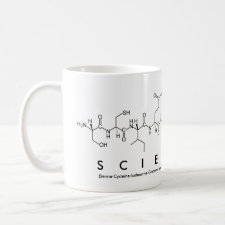
Authors: Verma N, Bhardwaj A
Article Title: Biosensor Technology for Pesticides-A review.
Publication date: 2015
Journal: Applied Biochemistry and Biotechnology
Volume: 175
Issue: (6)
Page numbers: 3093-3119.
DOI: 10.1007/s12010-015-1489-2
Abstract: Pesticides, due to their lucrative outcomes, are majorly implicated in agricultural fields for crop production enhancement. Due to their pest removal properties, pesticides of various classes have been designed to persist in the environment over a longer duration after their application to achieve maximum effectiveness. Apart from their recalcitrant structure and agricultural benefits, pesticides also impose acute toxicological effects onto the other various life forms. Their accumulation in the living system may prove to be detrimental if established in higher concentrations. Thus, their prompt and accurate analysis is a crucial matter of concern. Conventional techniques like chromatographic techniques (HPLC, GC, etc.) used for pesticides detection are associated with various limitations like stumpy sensitivity and efficiency, time consumption, laboriousity, requirement of expensive equipments and highly trained technicians, and many more. So there is a need to recruit the methods which can detect these neurotoxic compounds sensitively, selectively, rapidly, and easily in the field. Present work is a brief review of the pesticide effects, their current usage scenario, permissible limits in various food stuffs and 21st century advancements of biosensor technology for pesticide detection. Due to their exceptional performance capabilities, easiness in operation and on-site working, numerous biosensors have been developed for bio-monitoring of various environmental samples for pesticide evaluation immensely throughout the globe. Till date, based on sensing element (enzyme based, antibody based, etc.) and type of detection method used (Electrochemical, optical, and piezoelectric, etc.), a number of biosensors have been developed for pesticide detection. In present communication, authors have summarized 21st century's approaches of biosensor technology for pesticide detection such as enzyme-based biosensors, immunosensors, aptamers, molecularly imprinted polymers, and biochips technology. Also, the major technological advancements of nanotechnology in the field of biosensor technology are discussed. Various biosensors mentioned in manuscript are found to exhibit storage stability of biocomponent ranging from 30-60 days, detection limit of 10-6 - 10-16 M, response time of 1-20 min and applications of developed biosensors in environmental samples (water, food, vegetables, milk, and juice samples, etc.) are also discussed. Researchers all over the globe are working towards the development of different biosensing techniques based on contrast approaches for the detection of pesticides in various environmental samples
Template and target information: Review - Biosensors for pesticides
Author keywords: pesticides, Biosensors, Acetylcholinesterase (AChE), Oragnophosphate (OP), Aptamers, transducers



Join the Society for Molecular Imprinting

New items RSS feed
Sign-up for e-mail updates:
Choose between receiving an occasional newsletter or more frequent e-mail alerts.
Click here to go to the sign-up page.
Is your name elemental or peptidic? Enter your name and find out by clicking either of the buttons below!
Other products you may like:
 MIPdatabase
MIPdatabase









